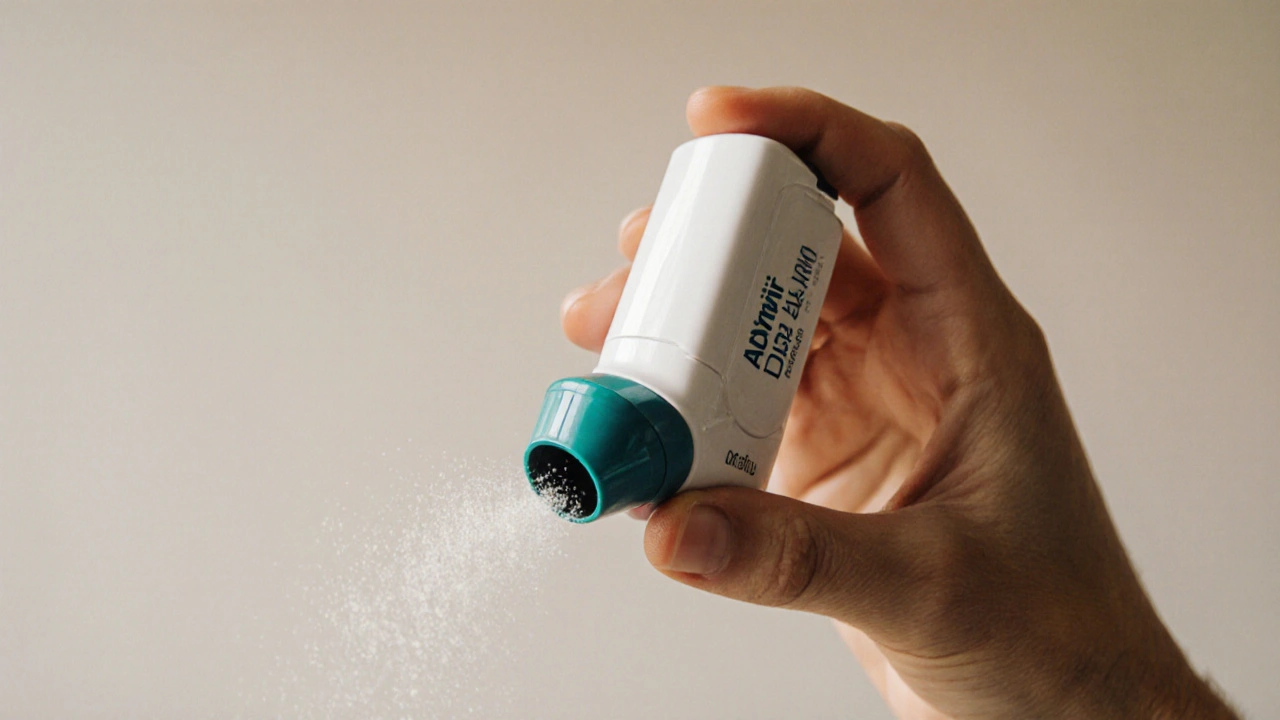When working with fluticasone, a synthetic corticosteroid delivered via inhalers or nasal sprays to relieve airway inflammation. Also known as Flixonase, Cutivate, it targets the immune response in the lungs and nose, cutting down swelling and mucus. Inhaled corticosteroid, a class of drugs that stay in the airways instead of entering the bloodstream is the broader family that fluticasone belongs to, and this design is why side‑effects are usually milder than oral steroids. The drug works by binding to glucocorticoid receptors, switching off inflammatory genes, and letting the airway muscles relax. Because it acts locally, doctors often prescribe it as a daily maintenance medication for chronic conditions rather than a quick rescue pill. Understanding these basics helps you see why fluticasone appears in many treatment plans and why comparing it to other options matters.
One of the most common partners for fluticasone is asthma, a chronic disease marked by reversible airway narrowing, wheezing, and shortness of breath. In asthma management, the guideline‑backed triple step‑up approach often adds an inhaled corticosteroid like fluticasone at step 2 to control daily symptoms and prevent attacks. The drug’s ability to reduce airway hyper‑responsiveness means patients can keep up with exercise and daily chores without fearing sudden breathlessness. Another key arena is COPD, a progressive lung disease where airflow limitation isn’t fully reversible. While COPD relies more on bronchodilators, many clinicians combine fluticasone with a long‑acting beta‑agonist to tackle the inflammatory component, especially in patients who experience frequent exacerbations. The third major use‑case is allergic rhinitis, nasal inflammation triggered by allergens like pollen or dust mites. A nasal spray formulation of fluticasone deposits the drug right where the irritation starts, easing sneezing, congestion, and itchy eyes. These three conditions illustrate the drug’s versatility: it can be inhaled for lower‑airway disease or sprayed for upper‑airway allergies, each time delivering anti‑inflammatory power where it’s needed most.
Below you’ll find a curated set of articles that dive deeper into how fluticasone stacks up against other medications, the dosing nuances for each condition, safety tips, and real‑world patient experiences. Whether you’re looking for a side‑by‑side comparison with other inhaled steroids, want to understand the latest research on combination therapy, or need practical advice on switching from a nasal decongestant to a steroid spray, the collection offers clear, actionable information. Keep reading to get the specifics you need to make an informed choice about using fluticasone in your health routine.

Compare Advair Diskus with top alternatives, covering effectiveness, side effects, cost, and how to choose the right inhaler for asthma or COPD.